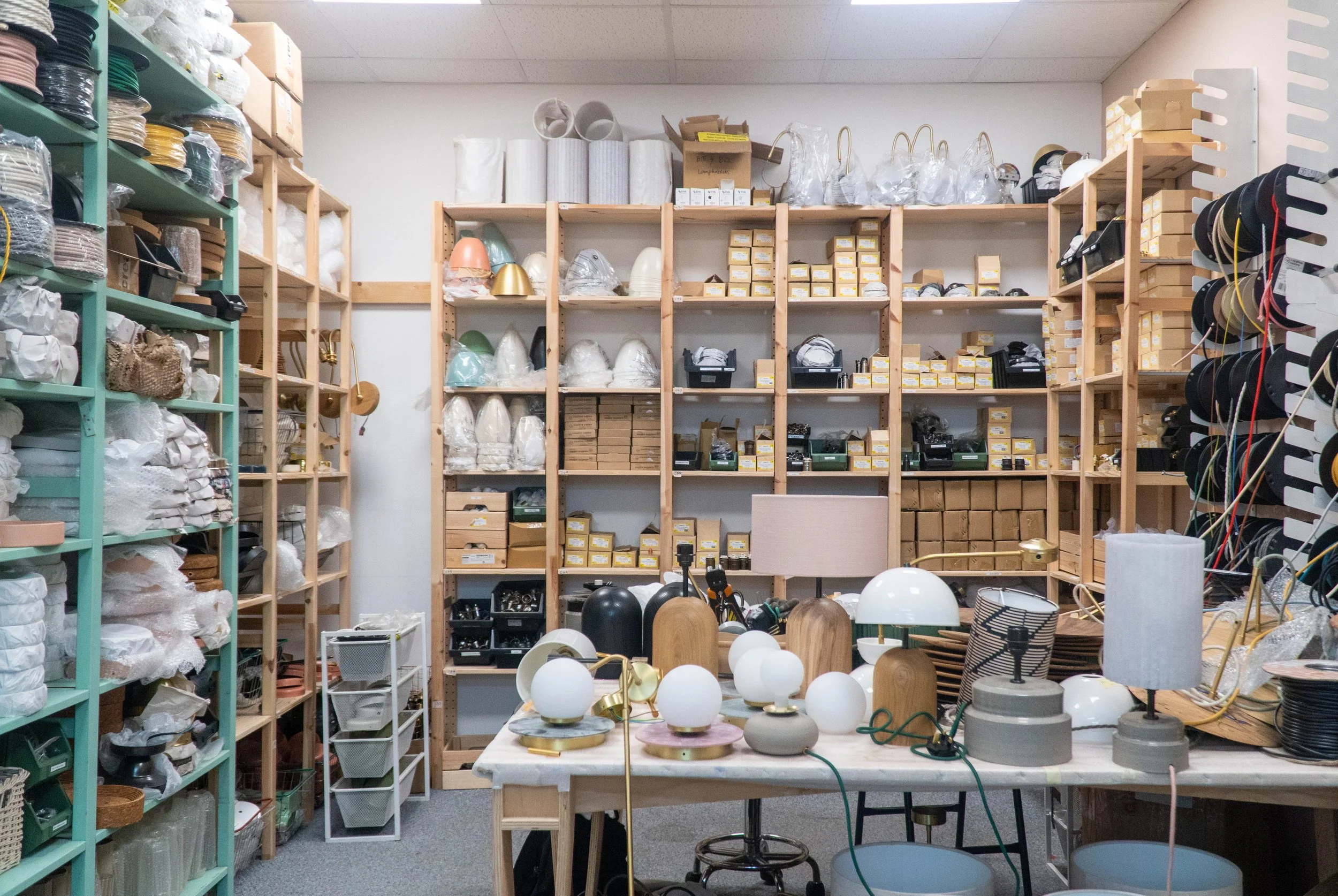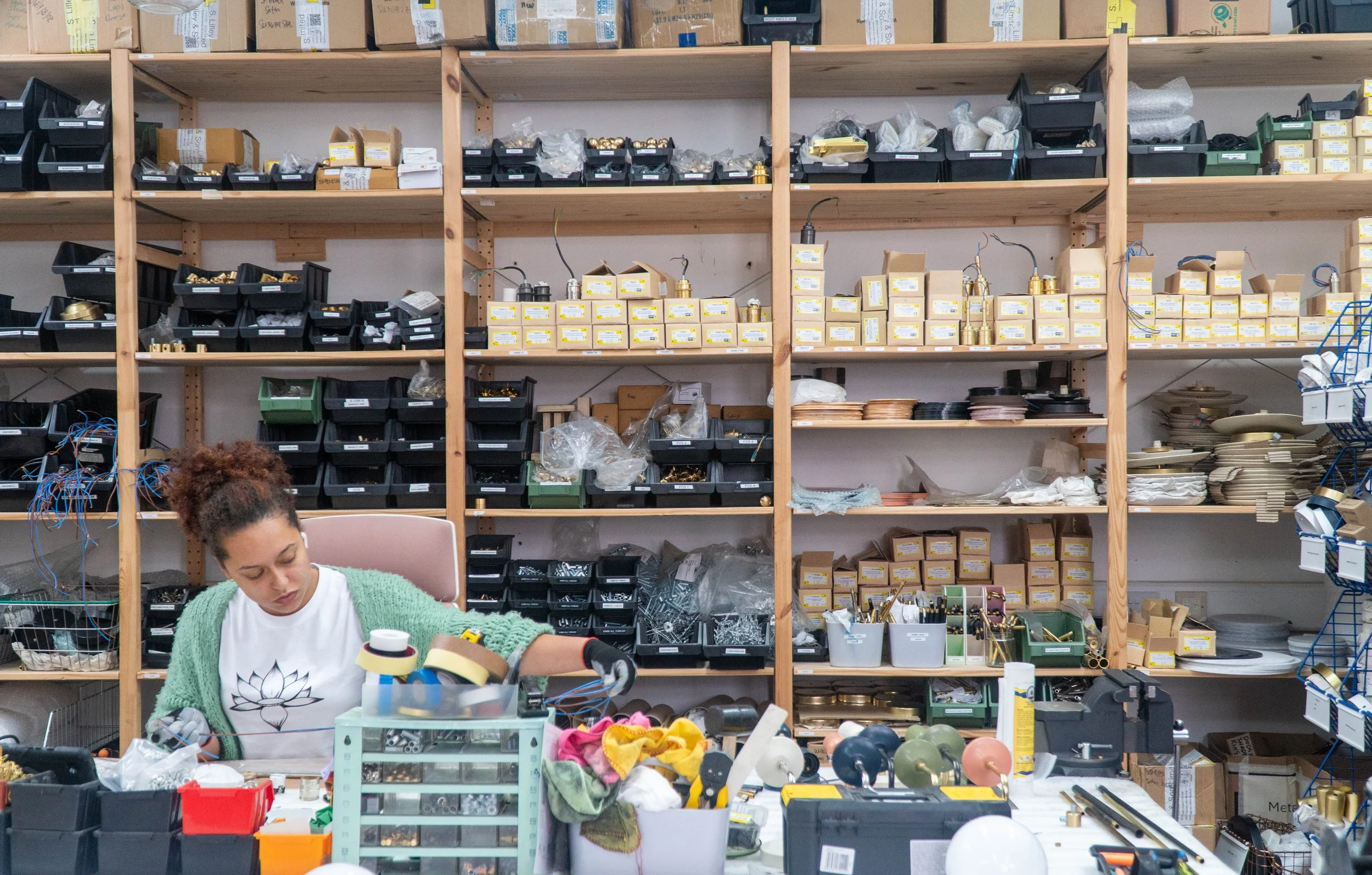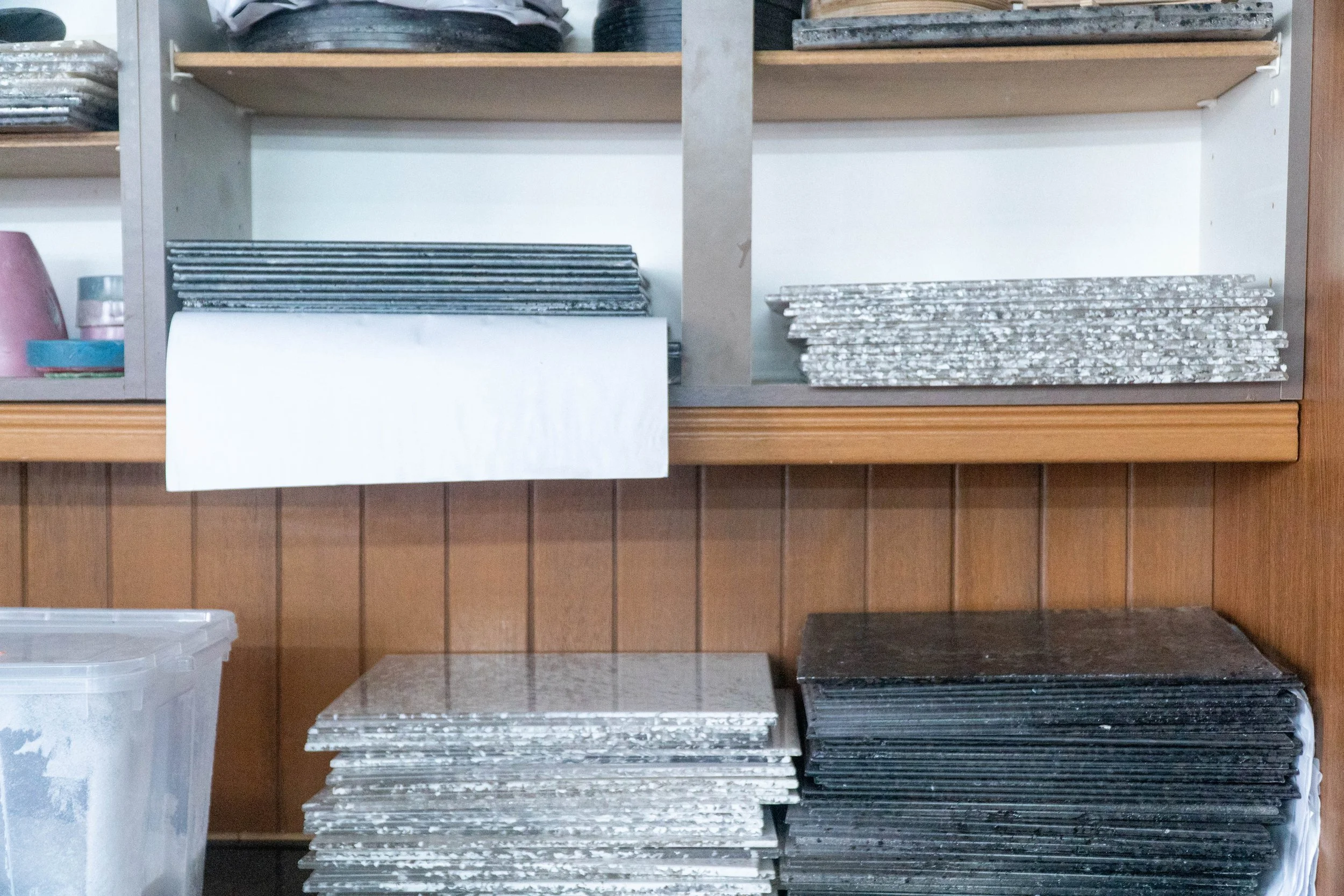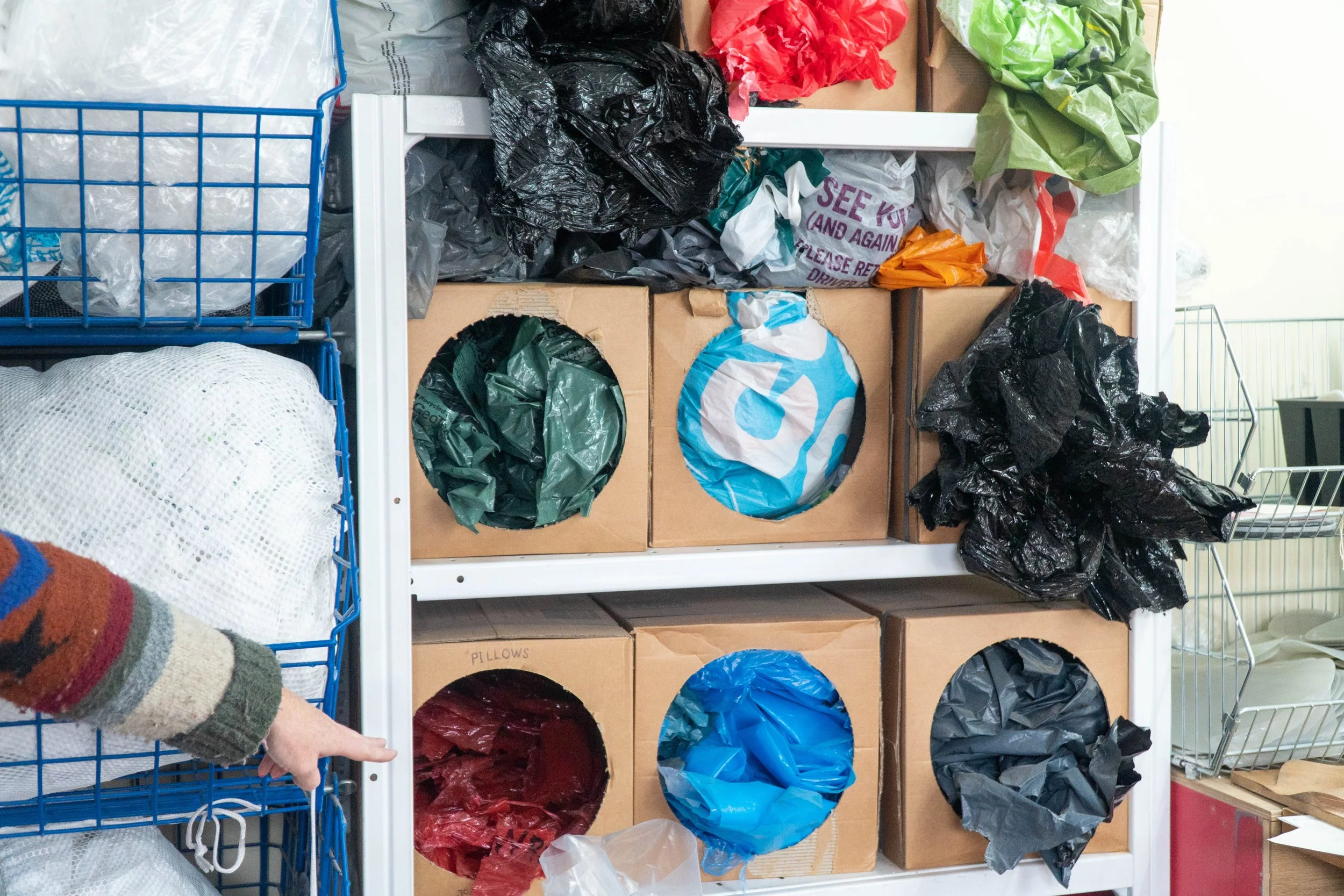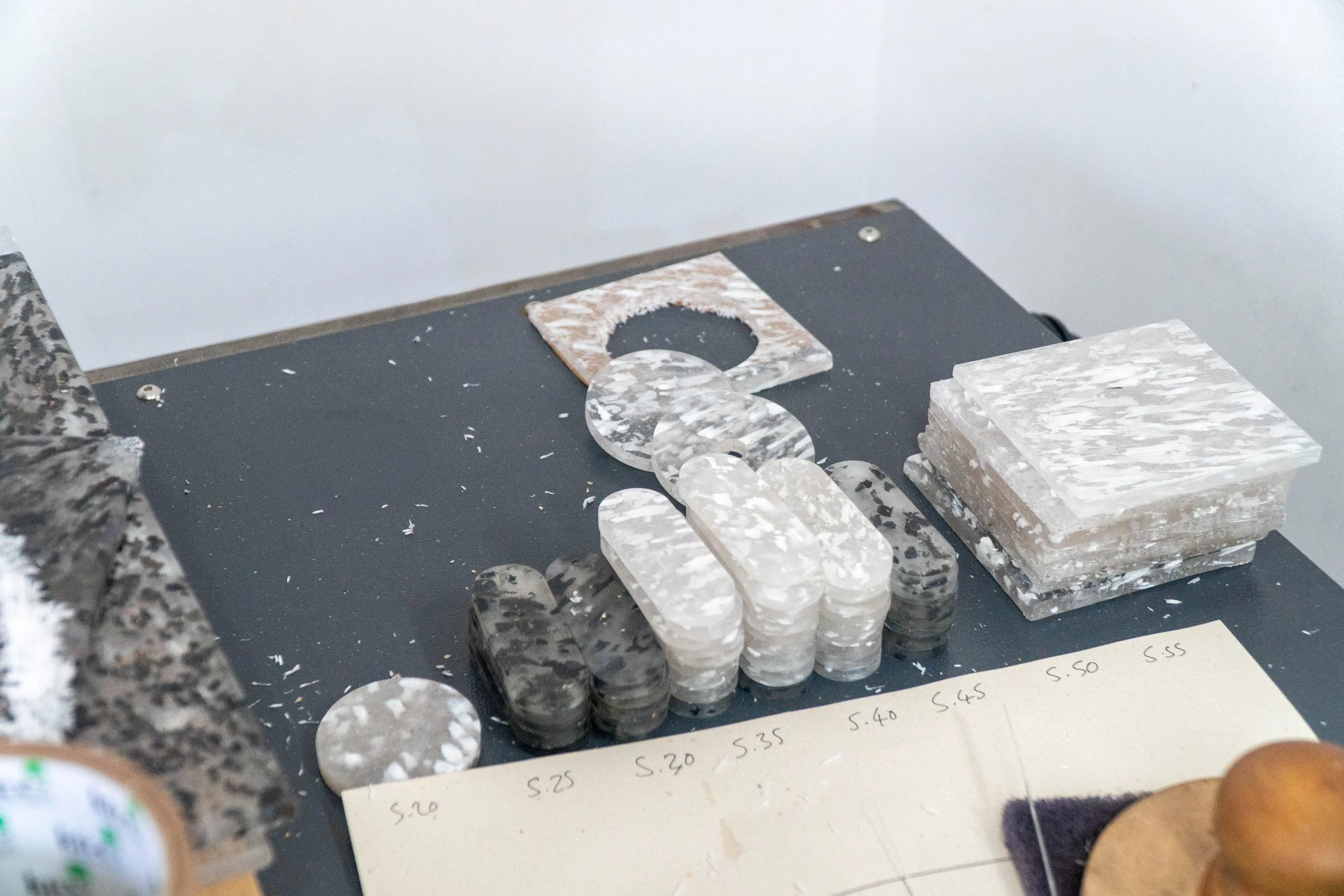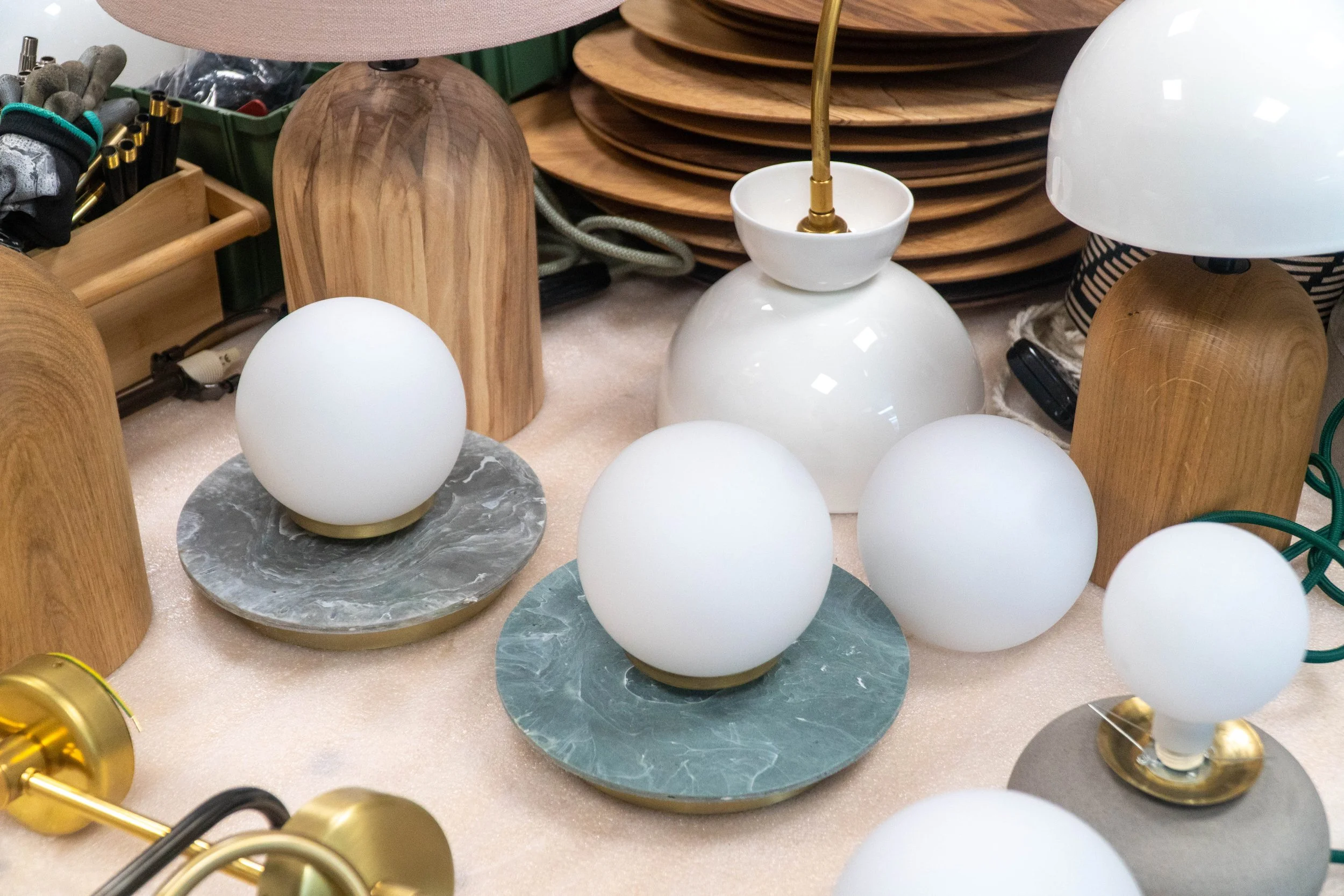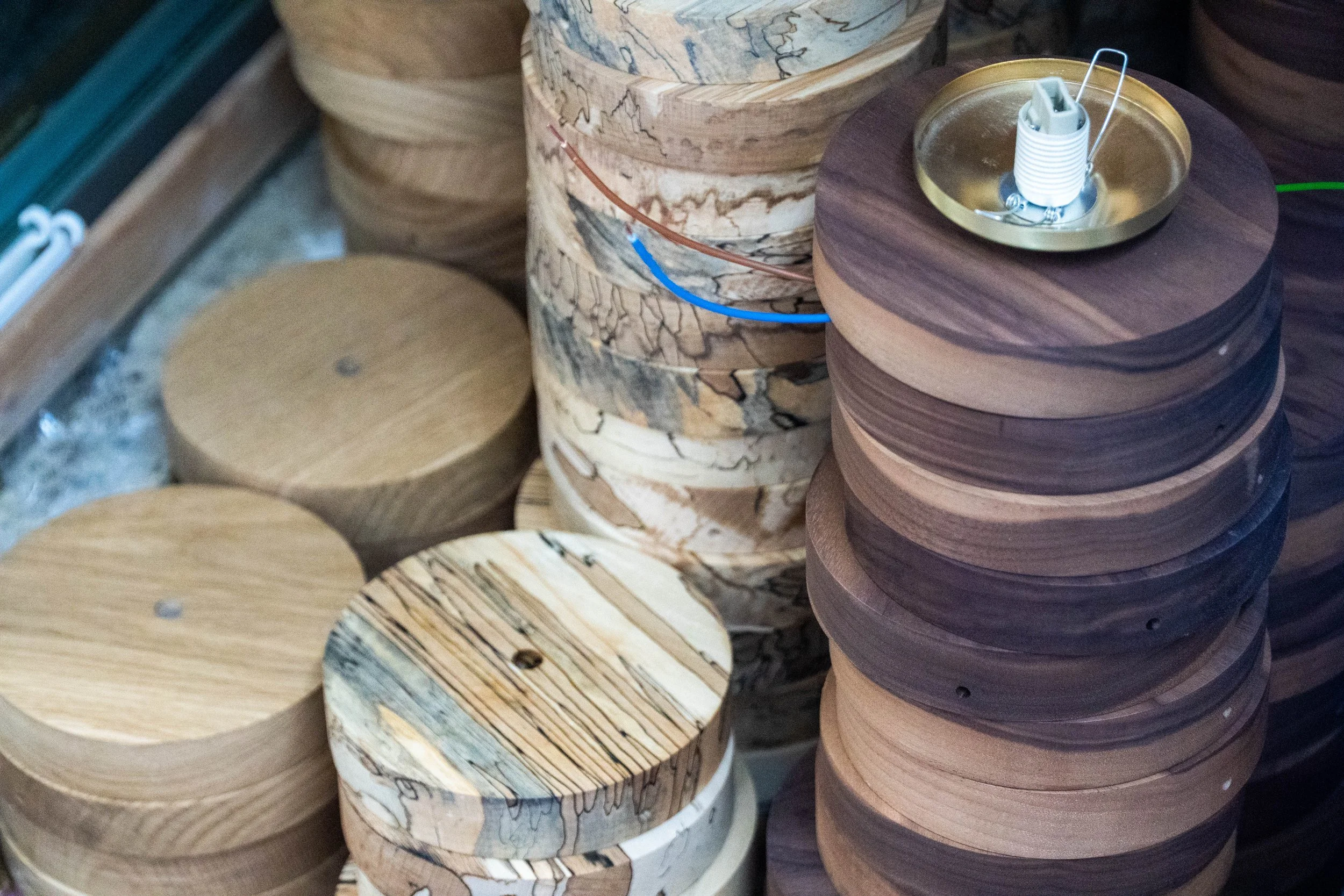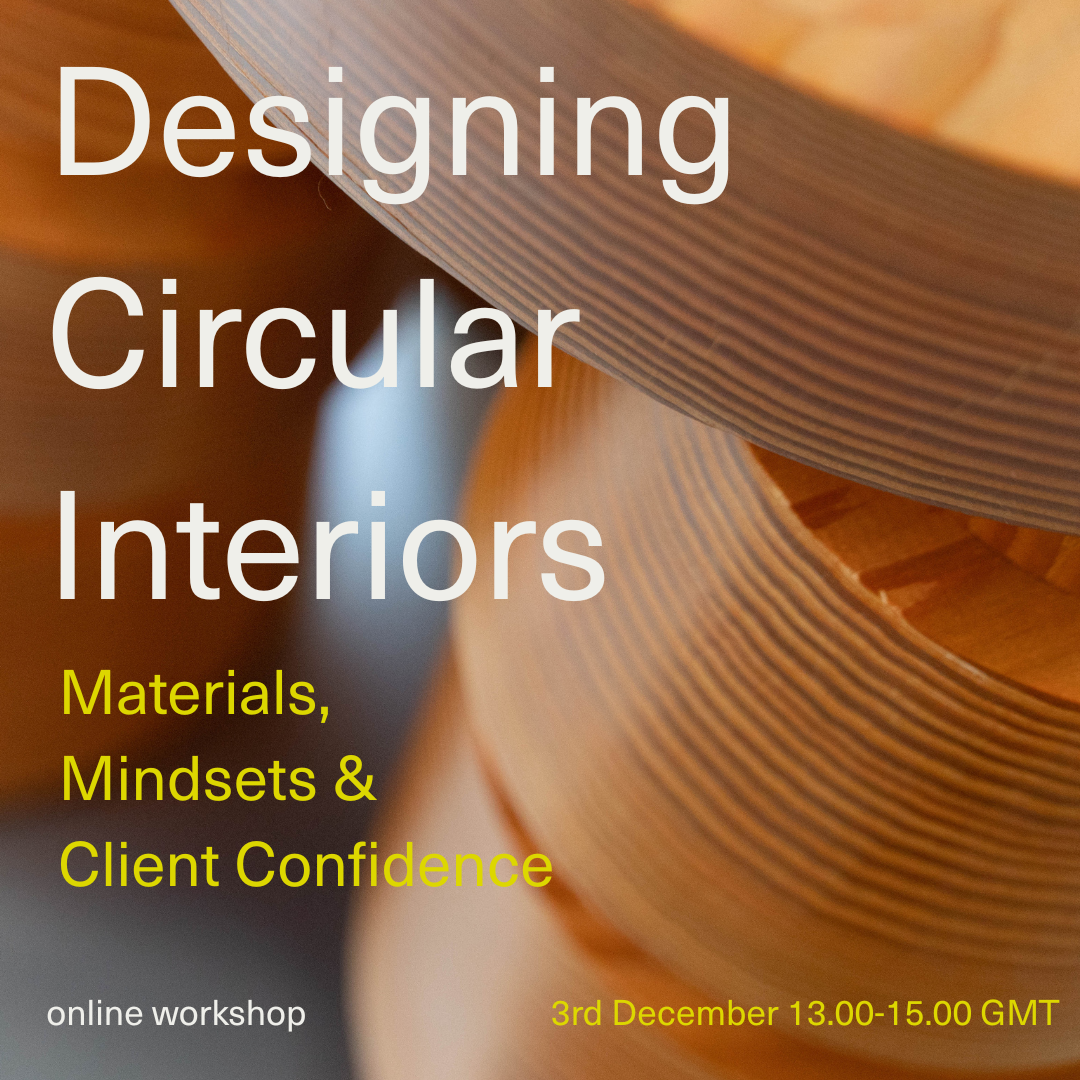How Spark & Bell Built Circularity into Every Corner of Their Lighting Studio
I’d been meaning to visit Spark & Bell’s Brighton studio for quite some time. I’ve admired their work from afar for years; not just for the beauty of their lighting, but for the systems that founder Emer Gillespie has built to make circularity a genuine part of everyday practice. When I finally made it to their workshop, it was clear that circular design at Spark & Bell isn’t a marketing line; it’s a way of working that’s deeply embedded into every process, every material, and every decision.
A view of the Spark and Bell workshop
Circular Systems, Not Just Circular Products
What struck me most about my visit was that Emer’s approach goes far beyond using great materials and specifying local makers. It’s about designing a system that keeps resources flowing at their highest possible value, a key principle of the circular economy. This studio is like an ecosystem of circularity that has been carefully cared for, perfected, and tweaked. Nothing is allowed to slip through the net. Nothing is treated as waste without being interrogated first. Offcuts are sorted for reuse, packaging is repurposed, and cardboard boxes are shredded for filler only after every possibility of reuse has been exhausted. It’s a small studio, yet it hums with this quiet, methodical awareness. You can literally feel the care Emer and all the small team are putting into every corner of this very packed yet very organsied space.
Venus Maynard working on product development. Venus is also has a wealth of plastic recycling knowledge
From CD Cases to Chandeliers
For the past few years, Spark & Bell have been developing their own recycled plastic materials in-house. The story behind this is both creative and practical. One of their main sources of material is something you probably have gathering dust in a cupboard, old CD cases. Emer explained how she doesn’t have to look far to find a constant supply of these. Boxes of CDs and cases are dropped off on her doorstep by a local friend who owns a record store, and neighbors have willingly donated their unwanted collections.
Partnering with Revive, a Bristol-based studio, they’ve created a complementary system: Revive processes the actual discs, while Spark & Bell use the clear plastic covers. Instead of competing, they have created a system that works for both studios’ aesthetics.
Sorted CD cases ready for shredding
These CD cases are sorted, shredded, and pressed into sheets, which become gorgeous lighting components and are particularly showcased in their Seraphin Chandeliers.
Their in-house production capacity is limited by the size of the heat press they currently have, but rather than seeing that as a restriction, they treat it as an innovation driver. Those constraints have led to beautifully refined designs, where recycled plastic isn’t just a circular choice but a material with its own aesthetic language that has been refined through testing and development.
The key to plastic recycling and processing is to never mix plastic types, which allows the system to remain circular. Spark and Bell work with both HDPE and polystyrene. Each type of plastic behaves differently, needs different temperatures and methods, and feels different in the final recycled product. This results in two distinct recycled materials to work with.
Shredded plastic
Pressed and stacked processed sheets ready for CNC cutting
HDPE / LDPE sorted by colour.
Offcuts from cnc cutting ready to be used for smaller design elements and samples for clients.
Seraphin Chandelier in the studio.
Designing for Longevity and Repair
Every Spark & Bell light is made with its full life in mind, designed to be taken apart, repaired, and reused rather than discarded. Each product comes with a 10-year guarantee and access to an in-house repair service in the UK, where the team will fix or replace components as needed.
Even at end of life, customers are encouraged to return their lights so materials can be recovered and re-entered into production. Longevity within the studio isn’t just about durability, it’s about building repairability and responsibility into every design.
Sustainability Meets Scalability
Systems are the hero again of Spark and Bells’ pretty amazing lead time. Because Emer and the team have refined their processes, they’re able to offer lead times of around a week for many orders. That’s remarkable for a handcrafted brand, and it allows them to compete with large, less sustainable manufacturers who rely on global supply chains.
Each light is made up of a recipe of parts. Stock for these is logged on arrival, for example, from local ceramicists or wood workers, and as orders come in, this stock is recorded accordingly. This allows the small studio to hold sufficient stock, meet demands, and also order from local makers with longer lead times just at the right moment.
It might seem super obvious, but the effort Emer and the team put into these systems allows them to create a truly competitive studio with circularity at its core.
Circularity as a Culture
The success of Spark & Bell lies in this obsessive attention to systems. Circularity here isn’t an aesthetic, nor an afterthought, but a quiet framework that holds everything together.
Walking around the studio, I could see how this mindset creates freedom rather than limitation. When every process is intentional and considered, it allows space to play within these frameworks. To reimagine old designs with new materials or to play with combinations of parts. With the rules of circulairty laid down and ingrained within the business, creativity can flow without guilt or waste. It’s a reminder that circular design isn’t just about materials, it’s about culture, care, curiosity, and a healthy obsession to detail.
Wooden components

